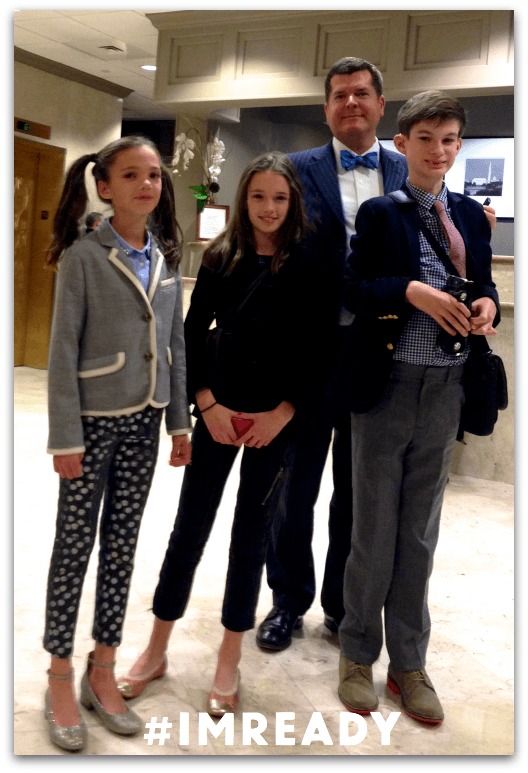
Hey JCREW #IMREADY for change. We want YOU to include models with disabilities in 2015. We want YOU to be part of the #15in2015 . 15 retailers including models with disabilities in 2015.
Note: Changing the Face of Beauty quickly met its #15in2015 so now it’s #15in2015 x 2!
We want YOU to be part of the #15in2015 x 2 retailers including models with disabilities in 2015.
We’re thrilled to take part in the #IAMREADY campaign by Changing the Face of Beauty to promote inclusion in advertising. We believe everyone should see themselves reflected in all aspects of their community and a large portion of that is through the mainstream media.
One of the reasons we started Ollibean was the lack of seeing accurate depictions in the media of families like our own. We’re here together each and every day. Henry doesn’t just show up for the extra-special episode . The models we used for the photo shoot shown on the home page were family friends – brothers and sisters, some with visible and invisible disabilities and some without.
Just like real life- pretty simple really.
Meriah Nichols‘ at A Little Moxie shared some more information about #IAMREADY .
1 in 5 Americans – or 56.7 million people – reporting having a disability, according to the 2010 U.S. Census Bureau.
Given the massive numbers, it’s surprising that more national retailers are not hiring more models with visible disabilities. Most people feel more inclined to buy products, after all, when they see those products modeled by someone who is a more-attractive version of themselves.
Target has a history of success with hiring models with disabilities, specifically, hiring models with Down syndrome. This practice has brought national attention and acclaim to the retailer. While Target’s attention to hiring diverse models is heartening, there are very few other national retailers who follow suit.
Heather Bradley, who is the mother of Izzy, the adorable model hired by Target, is trying to change that. Together with Katie Driscoll, founder of Changing the Face of Beauty, she started the “I’m Ready” campaign whose goal is to invite 15 national retailers in the year 2015 to hire a model with a disability.
While children with Down syndrome have recently been the most visible models with disabilities, the “I’m Ready” campaign
The plan of the campaign is simple: to post a photo of the individual with a disability, to include the hashtag of a favorite major retailer along with the #IMREADY hashtag and to make a call for the retailer to participate.
Toward that end, social media has been flooded with images of people with disabilities calling out to their favorite retailer with the hashtag, #IMREADY:
It took retailers a long time to include models of various races and sexual orientation in their advertising. The group that is currently left out of the picture are people with disabilities. With one fifth of the population of the United States claiming to have a disability, that is a lot of people who are ready and waiting to see themselves represented in the media.
“Disability” has changed from the stereotype of the past of the pitiable, helpless “wheelchair bound” “cripple” to recognizing that “disability” is more of a spectrum than anything. It embraces people who see, move, hear, feel, think and learn in ways that are less common than most. Disability is not a disease; it’s a natural part of the human experience, one in which more than two-third of the planet will have the chance to join at one point or another in their lives.
So the point here is, let’s celebrate it. Let’s see disability as an expression of our human beauty. Let’s see ourselves and our sons and daughters accurately represented in the mainstream media .
The Campaign
Changing the Face of Beauty encourages people to post a photo of the model with a disability on social media and call attention to the campaign by saying a form of:
“Hey (your favorite retailer) #IMREADY for change. We want YOU to include models with disabilities in 2015. We want YOU to be part of the #15in2015 . 15 retailers including models with disabilities in 2015. We know you see us. Represent us.”







Oh, I am so happy to learn about this campaign! I have been wanting this for so long and was getting ready to try and do it myself. Please let me know if there is anything that Kids Included Together can do to help or get involved.
Thank you for sharing our mission and for your own practice of inclusion! Just perfect!
Love this! thank you for sharing the mission behind Changing the Face of Beauty and for including models of all abilities yourself! Love this!